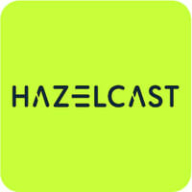

Hazelcast Platform and Redis are both competitors in the data platform sector. Hazelcast has an edge in scalability and in-memory computing, while Redis leads due to its versatile and fast performance.
Features: Hazelcast Platform includes real-time stream processing, distributed data structures, and elastic scalability. Redis provides an in-memory data structure store, persistent data options, and a wide range of data types.
Ease of Deployment and Customer Service: Hazelcast Platform offers flexible deployment with strong customer support. Redis delivers seamless cloud-based deployment, backed by a supportive community.
Pricing and ROI: Hazelcast Platform presents competitive pricing with high ROI from its in-memory capabilities. Redis has flexible pricing, including a free version, which enhances accessibility and value.
| Product | Market Share (%) |
|---|---|
| Redis | 21.8% |
| Hazelcast Platform | 4.2% |
| Other | 74.0% |

| Company Size | Count |
|---|---|
| Small Business | 11 |
| Midsize Enterprise | 3 |
| Large Enterprise | 8 |
An IMDG (in-memory data grid) is a set of networked/clustered computers that pool together their random access memory (RAM) to let applications share data structures with other applications running in the cluster.
The primary advantage is speed, which has become critical in an environment with billions of mobile, IoT devices and other sources continuously streaming data. With all relevant information in RAM in an IMDG, there is no need to traverse a network to remote storage for transaction processing. The difference in speed is significant – minutes vs. sub-millisecond response times for complex transactions done millions of times per second.
Redis offers high-speed, in-memory storage, renowned for real-time performance. It supports quick data retrieval and is used commonly in applications like analytics and gaming.
Renowned for real-time performance, Redis delivers high-speed in-memory storage, making it a favorite for applications needing quick data retrieval. Its diverse data structures and caching capabilities support a broad array of use cases, including analytics and gaming. Redis ensures robust scalability with master-slave replication and clustering, while its publish/subscribe pattern renders it reliable for event-driven applications. The solution integrates smoothly with existing systems, minimizing performance tuning needs. Although documentation on scalability and security could be improved, Redis remains cost-effective and stable, commonly utilized in cloud environments. Enhancing integration with cloud services like AWS and Google Cloud and refining GUI may improve usability.
What are the key features of Redis?Redis finds application across industries for tasks like caching to improve application performance and speed, minimizing database load. It enables real-time processing for session storage, push notifications, and analytics. As a messaging platform, Redis handles high traffic and supports replication and clustering for cross-platform scalability.
We monitor all In-Memory Data Store Services reviews to prevent fraudulent reviews and keep review quality high. We do not post reviews by company employees or direct competitors. We validate each review for authenticity via cross-reference with LinkedIn, and personal follow-up with the reviewer when necessary.